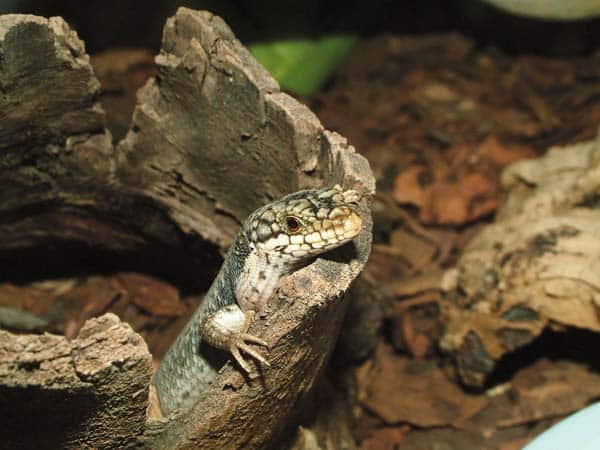
Description:
Scientific name: Egernia striolata
Life span: Up to 10 years
The deep-headed tree-crevice skink belongs to the genus Egernia and ranges in size from medium to giant. A faint dorso-lateral stripe that extends from the head to the base of the tail may be seen on this animal, which ranges in color from dark black to gray-brown. On the torso, they can appear speckled with white patches and specks. While the ventral surfaces of the limbs and tail are often whitish or gray, ventral surfaces are frequently lemon-yellow or pastel orange. From the eye to the groyne, which contains light scales that create transverse bars, there is a dark lateral band.
Native Region/Habitat
The native Australian species known as the tree-crevice skink may be found throughout Western Australia’s desert region, from the Pilbara and the Great Sandy Desert south to Carnarvon and the Great Victoria Desert.
It is absent from the coast, the Great Dividing Range’s higher elevations, central and eastern Queensland, and further areas in the southern Northern Territory and northwest South Australia.
The tree skink is primarily an arboreal (tree-dwelling) species that lives in hollow logs, crevices, below the bark of both standing and downed trees, and other such places.

Behavior:
Egernia striolata typically gather in gregarious small groups of two to four people.
Especially among lizards, Egernia striolata are well renowned for their intricate social relationships. They excel at modifying their behavior and using current skills to fit new situations, which is one of the reasons they are able to build such intricate associations. As a result, they are able to adapt their behavior to changes in their environment. As a result, they are able to adapt their behavior to changes in their environment.
Care As a pet/In captivity:
- It can be challenging to decide what to do with these lizards because they can be kept as pets.
- A typical housing area for them can be 28 inches by 24 inches by 24 inches. The enclosure they are housed in should be big enough for them to roam about easily. This comprises substrates designed specifically for the habitat and additional lizard enrichments.
- Depending on what the lizards like to eat, feeding can be adjusted when kept in captivity. Live crickets, mealworms, and other insects can be fed to them, but soft meals with flavorings, such as baby food, also perform well. These lizards can obtain a sufficient quantity of vitamins and minerals by using peach, sweet potato, turkey, chicken, and lamb infant foods.
- Illumination is necessary, and having a heat lamp as well as a regular lamp is essential for welfare.
Table





